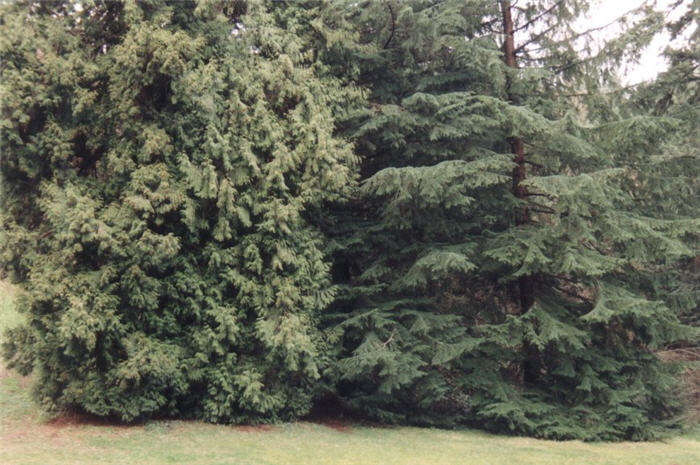| Botanical Name: Thuja plicata | |
| Common Name: Western Arborvitae |

-
Anatomy
-
Culture
-
Design
Plant Type
Tree, Conifer
Height Range
40-60', 60-100'
Flower Color
n/a
Flower Season
n/a
Leaf Color
Dark Green
Bark Color
Brown, Red
Fruit Color
Brown
Fruit Season
Persistent
Sun
Full
Water
High
Growth Rate
Moderate, Slow
Soil Type
Clay, Loam
Soil Condition
Average, Rich, Well-drained, Moist
Soil pH
Acid, Neutral, Basic
Adverse Factors
n/a
Design Styles
Formal, Mediterranean, Ranch, Spanish, Woodland
Accenting Features
Fall Color, Specimen, Unusual Foliage
Seasonal Interest
Winter, Spring, Summer, Fall
Location Uses
Background, Shrub Border, Lawn, Walls / Fences
Special Uses
Hedge, Screen, Wind Break
Attracts Wildlife
n/a
Information by: Stephanie Duer
Photographer:
Photographer:
-
Description
-
Notes
Western Arborvitae is native to the Northwest, an evergreen growing 50 to 70 feet tall and up to 25 feet wide, though usually not that large in cultivation, especially here. Its form is pyramidal, with branches to the ground and it has a medium texture. Adaptable to many climate zones. Many designer cultivar forms available. Leaves are scale-like, glossy dark green, and aromatic. Though evergreen, it sometimes turns a yellowish-green to brown in the winter. Small cones. Reddish-brown furrowed bark.
Grow in loamy, well-drained soils in full sun to part shade. Tolerant of both acidic and alkaline soils. Tolerant of being sheared, though using selective pruning methods will support a more natural form and result in less work. Synonomous with Western Red Cedar.